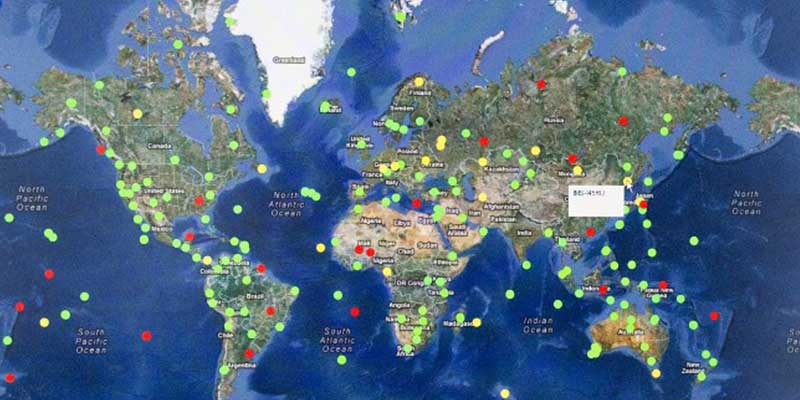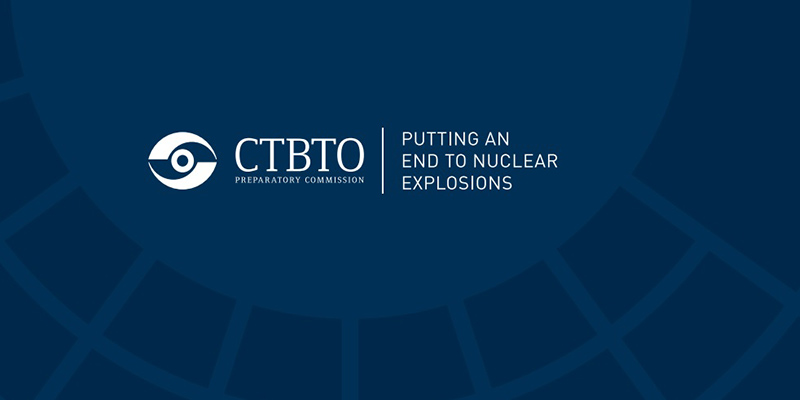- World
- Oct 23
Explainer - Comprehensive Nuclear Test Ban Treaty (CTBT)
• Last week, Russia’s Parliament moved swiftly to fulfil the wish of President Vladimir Putin by completing the passage of a Bill that shifts Moscow’s legal stance on nuclear testing.
• The lower house, the State Duma, passed the second and third readings of a Bill that revokes Russia’s ratification of the Comprehensive Nuclear Test Ban Treaty (CTBT).
• Putin urged the Duma to make the change in order to mirror the position of the United States, which has signed but never ratified the 1996 Treaty.
• Russia says it will not resume nuclear testing unless Washington does, but arms control experts are concerned it may be inching towards a test that the West would perceive as a threatening escalation in the context of the Ukraine war.
• Russia’s shift on the CTBT follows its suspension earlier this year of New START, the last remaining bilateral nuclear treaty with the United States.
Comprehensive Nuclear-Test-Ban Treaty (CTBT)
• Nuclear weapons tests are experiments carried out to determine nuclear weapons’ effectiveness, yield, and explosive capability.
• Banning nuclear testing will prevent the development of nuclear weapons by countries that do not currently have them, upgrades to current nuclear arsenals or the creation of new, more advanced generations of nuclear weapons.
• Between 1945 and 1996, more than 2,000 nuclear tests — over 1,000 by the United States, more than 700 by the Soviet Union, 210 by France, 45 by the United Kingdom, and 45 by China — were conducted at over 60 test sites around the world.
• The Soviet Union last tested on October 24, 1990, the United Kingdom on November 26, 1991, the United States on September 23, 1992, France on January 27, 1996 and China on July 29, 1996, just a few months before the Comprehensive Nuclear-Test-Ban Treaty (CTBT) opened for signature.
• It comprises a preamble, 17 articles, two annexes and a Protocol with two annexes.
• By totally banning nuclear testing, the Treaty seeks to constrain the qualitative improvement of nuclear weapons and to end the development of new types of nuclear weapons. It constitutes an effective measure of nuclear disarmament and non-proliferation in all its aspects.
• The Treaty was adopted by the United Nations General Assembly and opened for signature in New York on September 24, 1996. On that day, 71 States signed the Treaty. The first State to ratify the Treaty was Fiji.
• Adherence to the Treaty is nearly universal, with 187 State Signatories and 178 ratifying states. However, to enter into force, the Treaty must be ratified by all 44 States listed in its Annex 2, for which eight ratifications are still required.
• North Korea, India, and Pakistan have not signed the CTBT. There are five States that have signed but are yet to ratify the CTBT, which are: China, Egypt, Iran, Israel, and the United States.
• The CTBT has created a firm and virtually unchallenged global norm against nuclear testing. Tests have been conducted on only 10 occasions since it opened for signature in 1996, compared with more than 2,000 over the five previous decades. In this century, only one country – North Korea – has breached the norm and tested nuclear weapons.
The Treaty’s comprehensive regime has the following components:
i) International Monitoring System (IMS):
The IMS is a unique global network of facilities using four state-of-the-art technologies: seismic to monitor shockwaves through the ground, hydroacoustic to detect sound waves in the oceans, infrasound to listen for ultra-low frequency sound waves inaudible to the human ear, and radionuclide to monitor the atmosphere for radioactive particles and gases from a nuclear explosion. Over 90 per cent of the Treaty’s 337 IMS facilities are already up and running and the system has proved its effectiveness, detecting all of North Korea’s declared nuclear tests.
ii) International Data Centre:
The IDC at the CTBTO’s headquarters in Vienna receives data from the IMS. The data are processed and made available to the CTBT’s States Signatories in both raw and analysed form. Within just hours of a suspected nuclear explosion, all States Signatories receive information about the location, magnitude, time, and depth of the event, followed by further analysis and any later detection of radionuclides that may indicate the nuclear nature of the event.
iii) On-Site Inspection:
OSI is a crucial component of the Treaty verification regime. Once the CTBT enters into force, States Parties will be able to request an inspection to gather further evidence on the ground if the IMS detects a possible nuclear explosion. As well as establishing whether a nuclear explosion has been carried out, facts might also be gathered to identify who was responsible for a Treaty violation. It is the ultimate verification measure.
Comprehensive Nuclear-Test-Ban Treaty Organisation (CTBTO)
• Known formally as the Preparatory Commission for the Comprehensive Nuclear-Test-Ban Treaty Organisation, the CTBTO exists to prepare for the Treaty’s entry into force.
It has two main tasks:
i) Promoting universal support of the Treaty.
ii) Building up the CTBT verification regime to ensure its operationalisation at entry into force of the Treaty.
• Its headquarters is situated in Vienna, Austria.
Why India has not signed CTBT?
India has claimed that the CTBT is discriminatory because it favours “five nuclear weapon states” — the US, the UK, China, France and Russia — when it comes to fulfilling obligations for eliminating nuclear weapons. Instead, it wanted the CTBT to have a clause on complete nuclear disarmament in a time-bound manner because there are technological differences between the ‘have’ and ‘have not’ countries. India was concerned about the likelihood of those already possessing nuclear weapons upgrading their arsenals through sub-critical and laboratory simulated testing.
Manorama Yearbook app is now available on Google Play Store and iOS App Store


